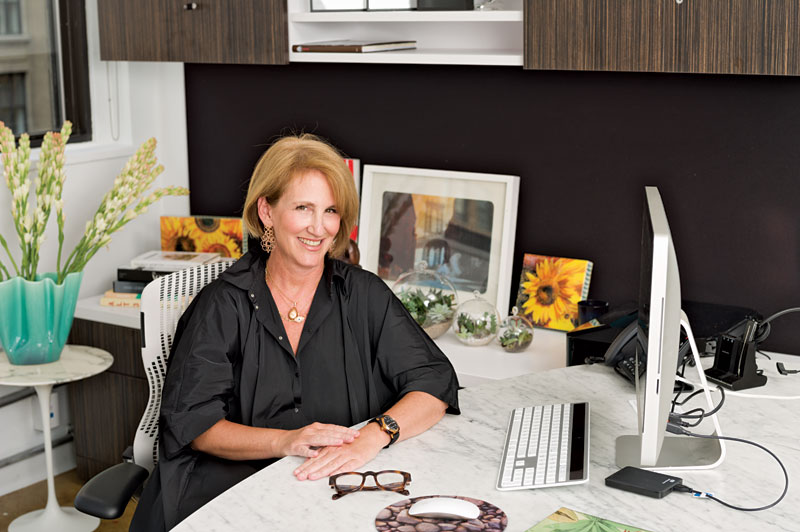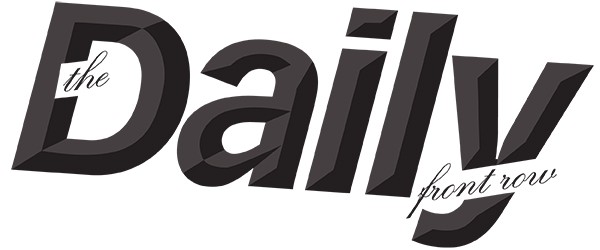
Where did you grow up?
I was born, weirdly, in Florida, and then moved to New York City in time to go to Studio 54 in my early teens, sneaking out at night.
When you graduated from Harvard did you have any idea that this was going to be your career path?
I was a comparative literature major. At first I thought I would do something in entertainment, but not Hollywood. After college, I’d lived in Paris for almost two years and I would go to Spoleto, Italy, in the summers to work for the Spoleto Festival. I was the assistant to the composer Gian Carlo Menotti, who ran the festival, and that’s how I met the Fendis. W magazine had done something on Menotti’s house and Carla Fendi was involved and I ended up helping her get the keys to his house when they couldn’t find them. I didn’t think it was such a big deal, but she remembered it, and she said, “You must come to Rome and work with Fendi!”
How did you end up working at Fendi?
Carla Fendi kept telling me to come and work there and I spoke to some friends and they were like, “Of course you should go to Rome, you’ve been in Paris for two years, why not?” So that’s how I started.
What was the position she was initially offering?
It’s what they refer to as “my right hand.” They were working on their first fragrance launch at the time. She taught me so many things. I remember in the beginning, I would ask people to do things really nicely and they wouldn’t do them and she told me, “You know what, Angela? In Rome ‘no’ doesn’t mean ‘no.’ It just means ‘Ask me again later, when I’ve had a coffee and a cigarette.’ ” But she also taught me that “no” just doesn’t exist in general. I have to say that has really stuck with me.
What was the fragrance?
It was the first Fendi fragrance. Karl Lagerfeld was doing an exhibit at the National Gallery of Modern Art in Rome at the same time. They did a party in the Palazzo Venezia, in the Sala del Mappamondo, “the room of the maps.” It’s where Mussolini used to give his speeches, and you can never really get into that room so it was a big deal. After that I worked on editorials. When someone in the Bahamas hadn’t gotten every single necklace they needed for a shoot I would be on the other end of that phone call.
How long were you there for?
For almost eight years. I was always doing Fendi and the Spoleto Festival. I would take a hiatus from Fendi and go do the festival in the summer. I got to meet the most amazing people, Ken Russell, Bill T. Jones, Philip Glass. Philip Glass was the first person to tell me about the return of Saturn, which is an astrology term for when the planet Saturn returns to the same place in the sky that it occupied at your birth, calling for a period of self-evaluation. I don’t really know a lot about astrology, but that’s how I ended up deciding to come home.
Tell us more!
It was the end of my 20s. I was saying to Philip Glass, “I really don’t know what to do, whether to stay or go home.…” We talked it through and it was in that moment that I decided to go back to New York. I came back and worked for Fendi.
You worked in Fendi’s U.S. press office?
Yes, that was maybe another four years as director of PR for the U.S. They were setting up their first U.S. subsidiary, before the purchase by LVMH.
How did you found C&M?
Eventually, I took a break, because I wanted to know what freelance was like, but I was still spending a lot of time doing work at Fendi. I ended up meeting Pilar Crespi, who was just finishing up at Gucci, and she’d been living in Milan, as the head of communications. Dawn Mello had brought her on. She was thinking of moving back to the States. She said, “I’d like to start an agency. What do you think?”
Who was your very first client?
Other than Fendi, I think the first client was Missoni. It was 1995. Hard to believe it’s been that long! At that time, Angela was doing her own collection—Rosita hadn’t yet turned over the artistic reins to Angela, so it was quite a different company then. It’s been really fun to evolve with them.
When did you eventually take over?
Pilar decided to stop working in about 2001. She got very happily remarried and she and her husband run an incredible foundation called Source of Hope. She decided she wanted to dedicate her life to other things.
But then you kept some of the same clients you had already?
It was all very amicable. We kept the name C&M because a lot of people had started remembering the name anyway. The thing about C&M is a lot of people think you are saying CNN. Actually, it can be very effective if someone thinks you are calling from CNN!
How do you think you’ve adapted to the rapidly changing media environment?
I would say, without any statistical certainty, that media jobs have changed more in the last five years than in the last 15. What works for us is to become even more specialized. Of course, we do social media and we offer services that didn’t exist before, but I believe that it’s our job to deliver a specialized package to clients. I do think the days of saying, “You have to go through me before you speak to so-and-so…” are gone. Now it’s more like you have to be able to really think and tell stories.
What are some of your craziest Fashion Week stories?
I remember we were backstage at Fendi and Carla Fendi was lying on the floor, having a spell, and in a kind of very American way, I said, “Let’s call 911!” They were like, “No, darling, no.” They brought her a little fur pillow and were like, “She’ll be fine. She’s just concentrating so hard.” In a few minutes, she was back up and they just went on their way.
What is the key to your staying power?
I would say it’s been relationship-driven, both in terms of the clients and in terms of the media. I think good old thoroughness is the first thing, and then taking the time to work with the writer or the editor to see which way a story could be the most interesting. It’s about having the kind of relationship with your client to say, “I know you want to tell it this way, but how about if we look at it a little bit this way too?” Clients would like it if everyone wrote the same platitudes about how great they are, but it doesn’t work that way in journalism. I’m careful to provide a perspective of what I know to be true in ways that people can hear it. “What will manifest is what you see before you” is a statement that rings true to me, and I don’t mean that in The Secret kind of way. I just mean in terms of having a straight, clear, focused path. I wish I could say I burned sage or something!
